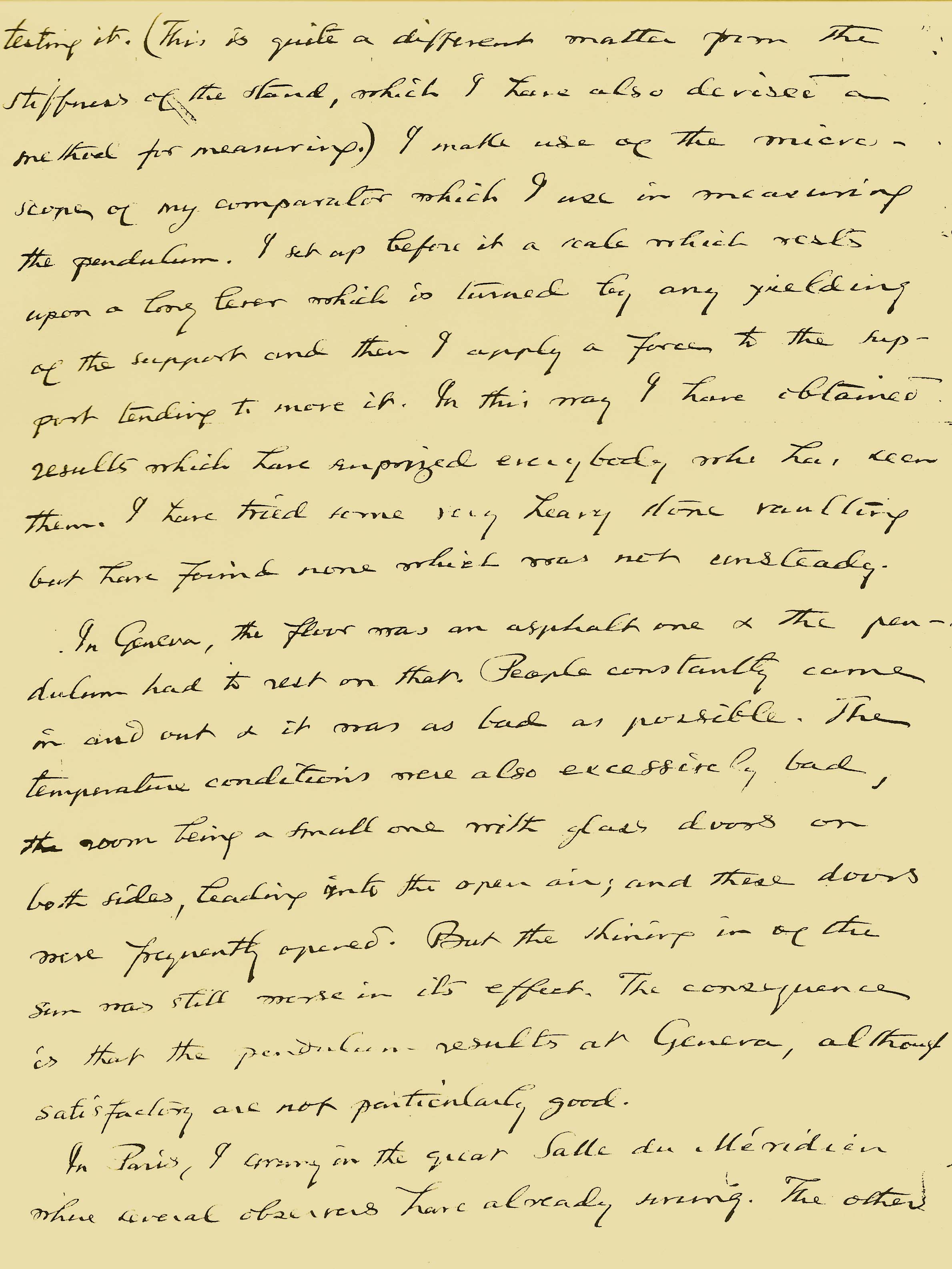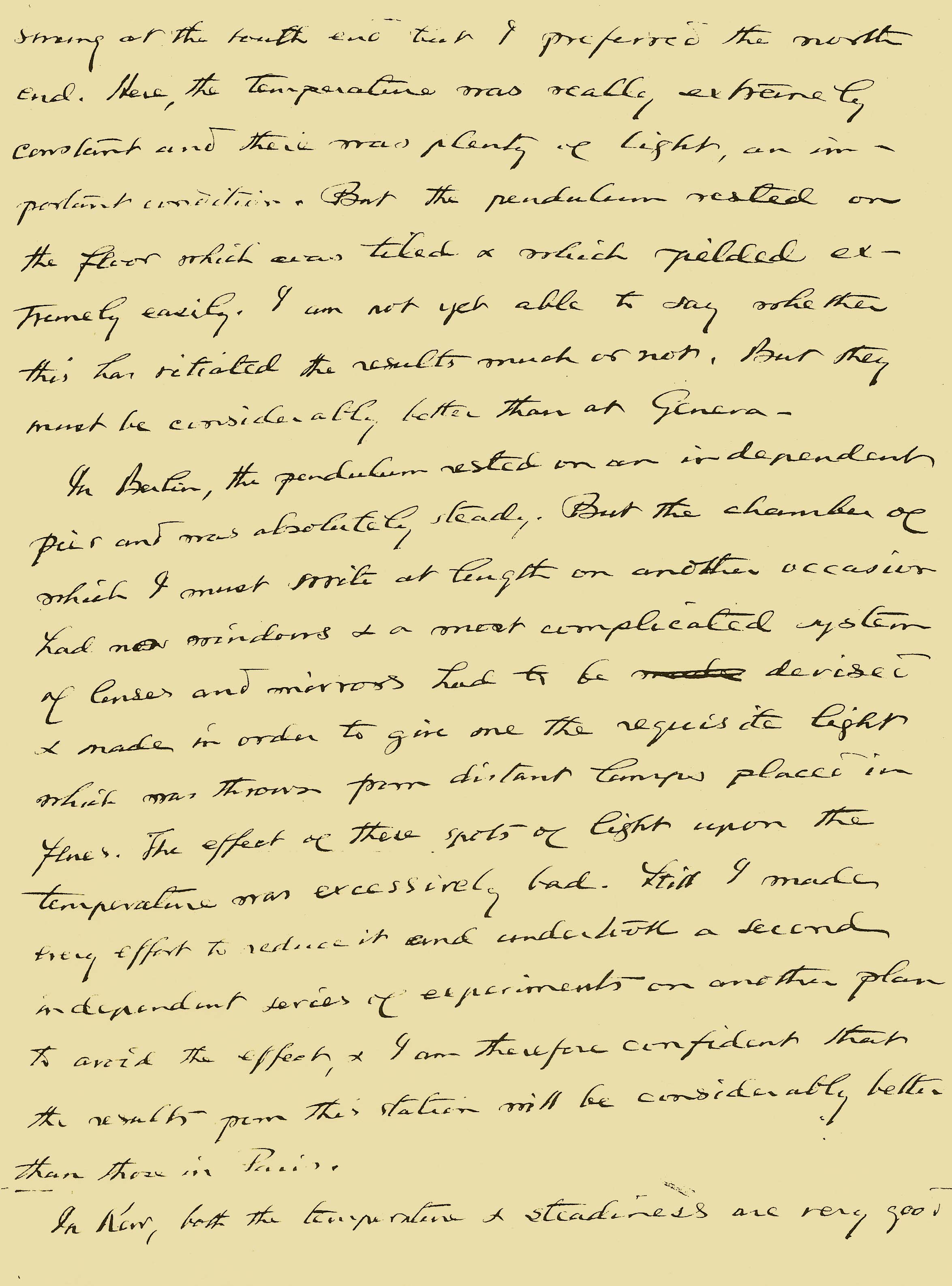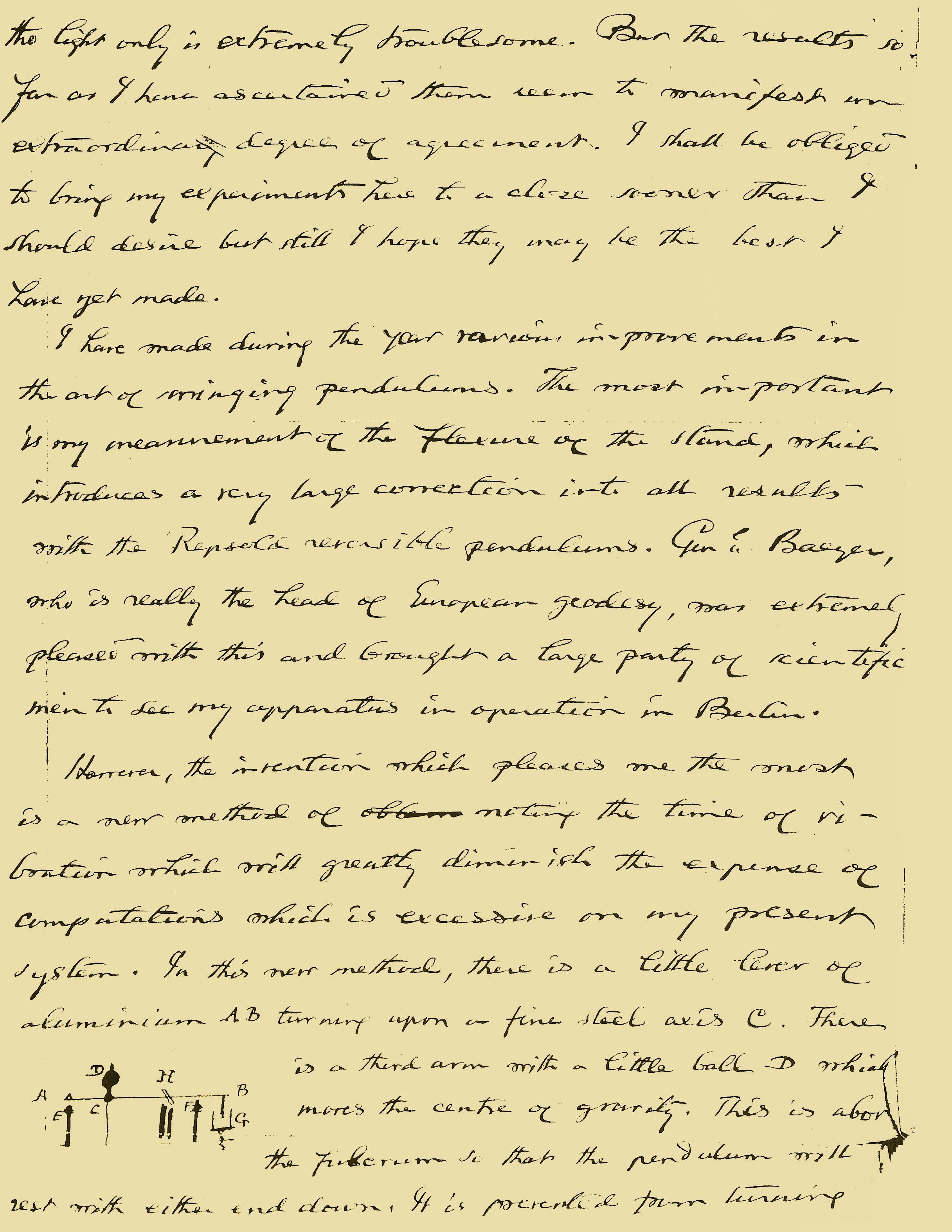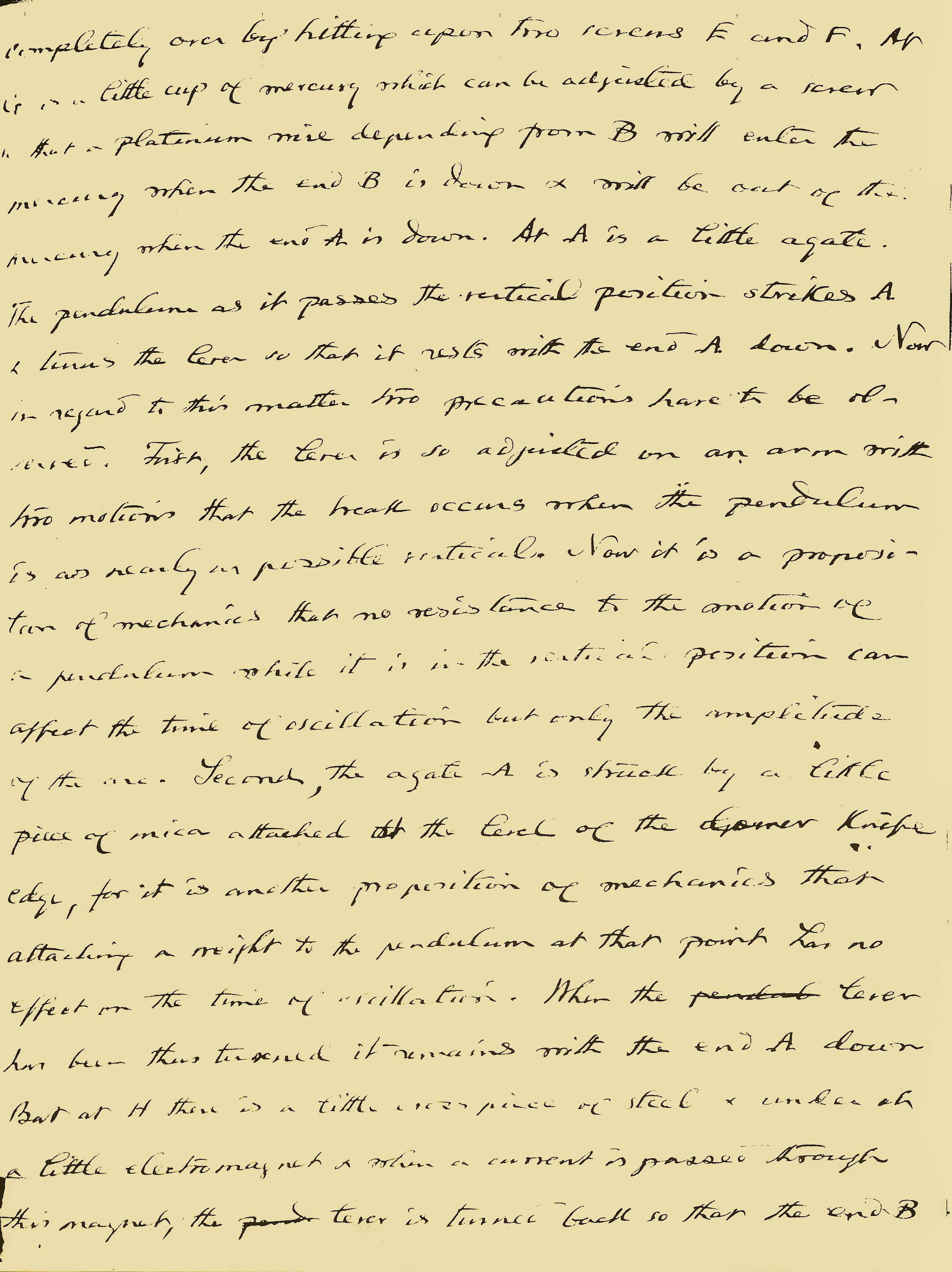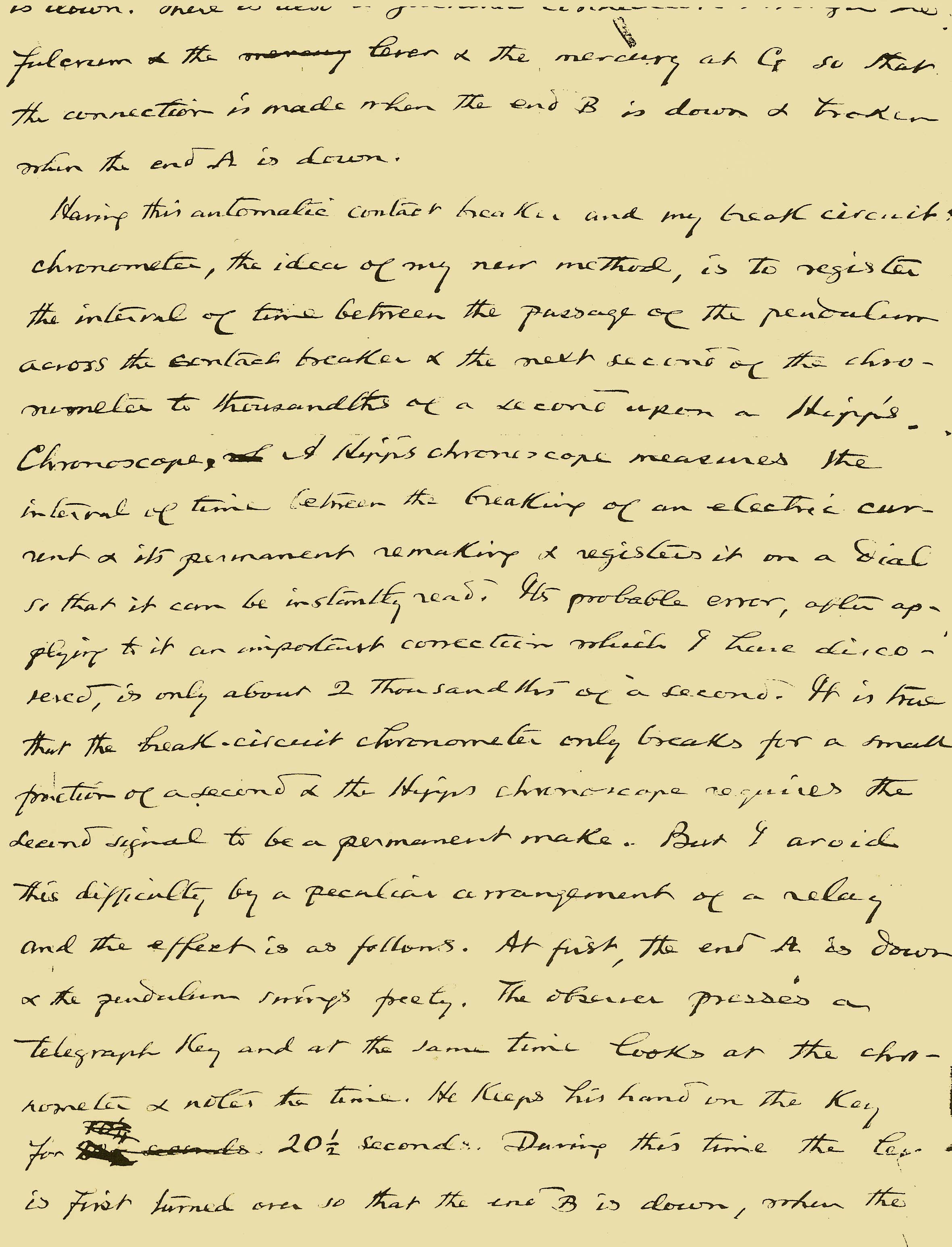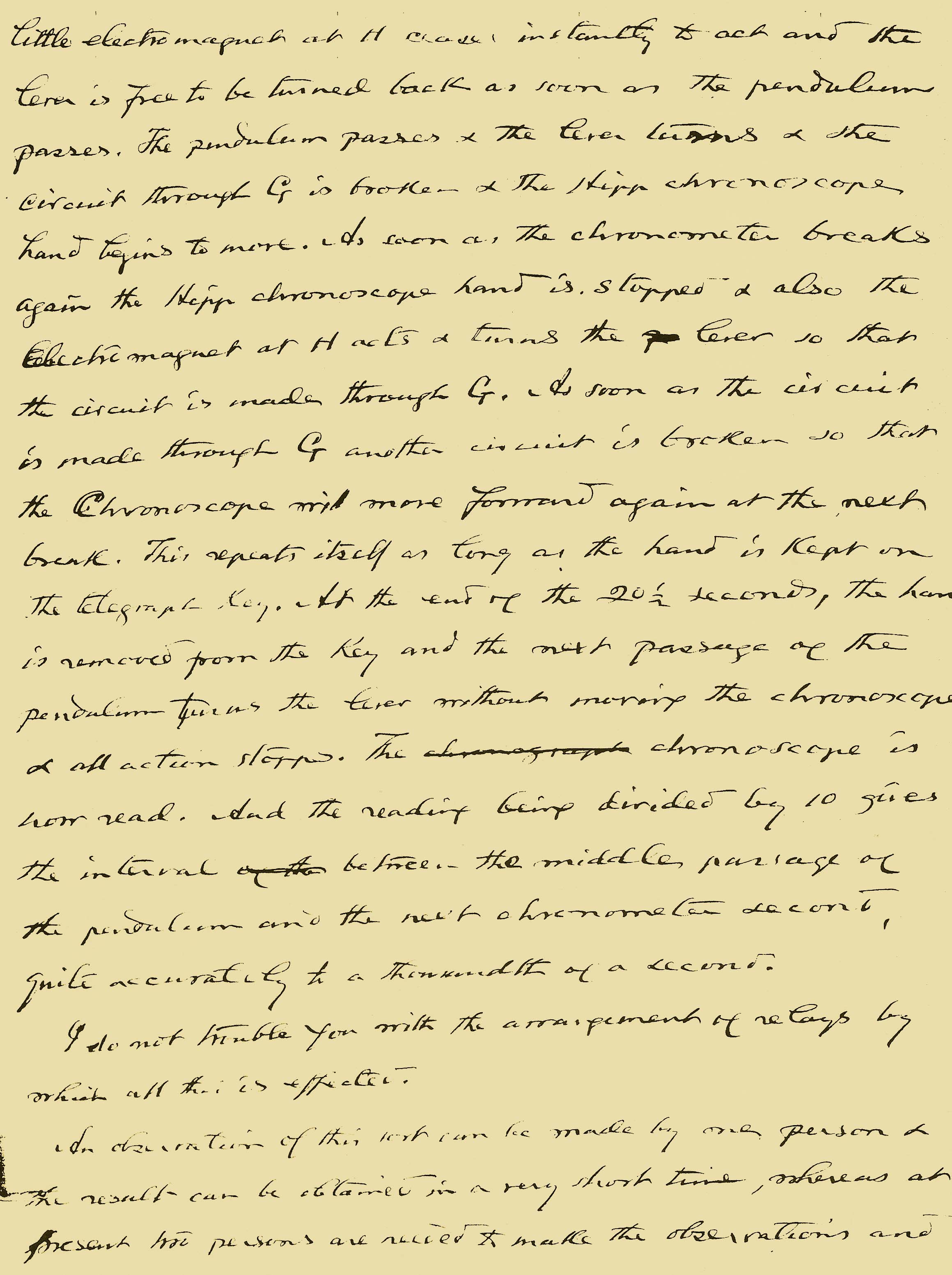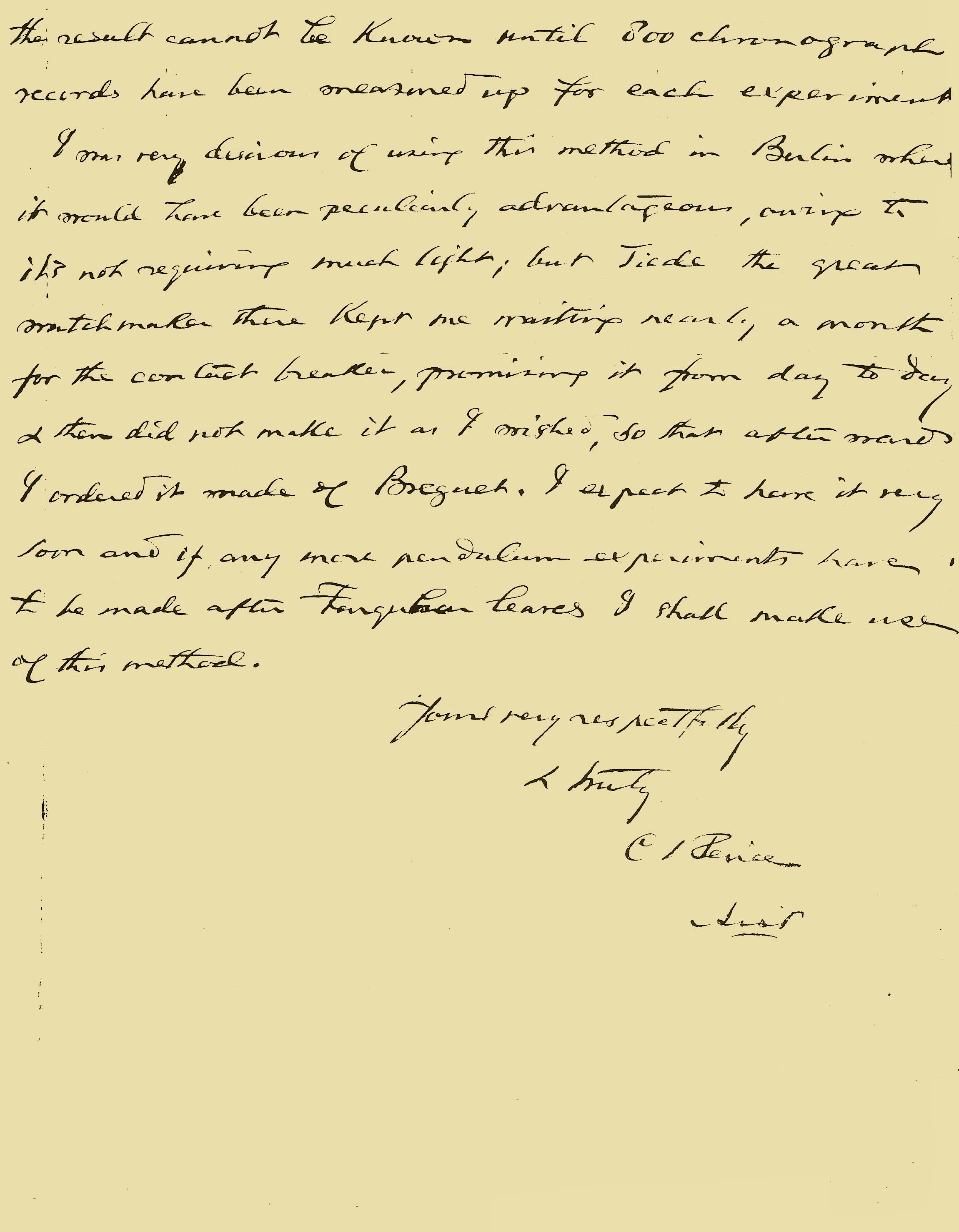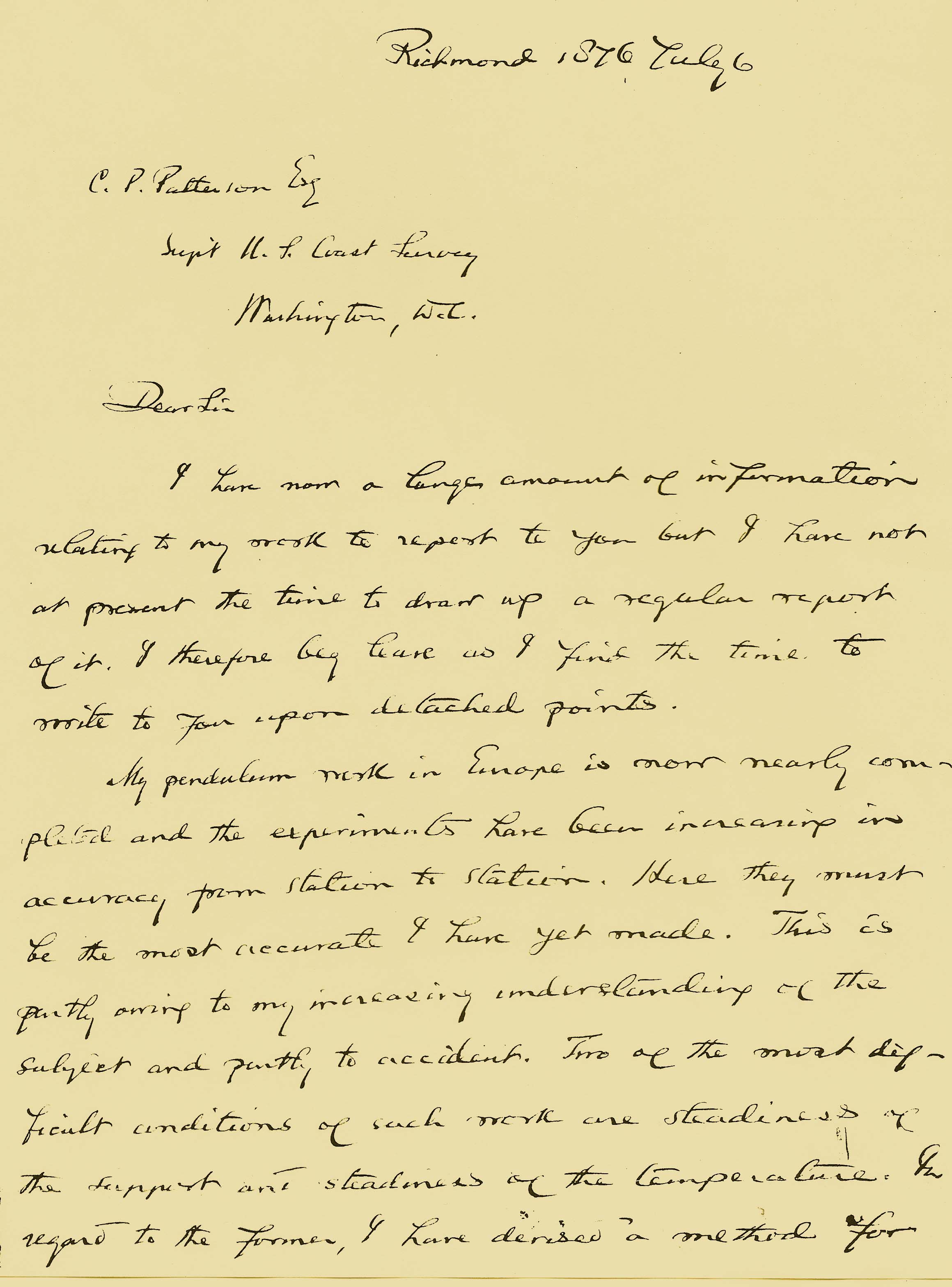
C. P. Patterson Esq.
Supt. U. S. Coast Survey
Washington D. C.
Dear Sir,
I have now a large amount of information relating to my work to report to you but I have not at present the time to draw up a regular report of it. I therefore beg leave as I find the time to write to you upon detached points.
My pendulum work in Europe is now nearly completed and the experiments have been increasing in accuracy from station to station. Here they must be the most accurate I have yet made. This is partly owing to my increasing understanding of the subject and partly to accident. Two of the most difficult conditions of such work are steadiness of the support and steadiness of the temperature. In regard to the former, I have devised a method for
